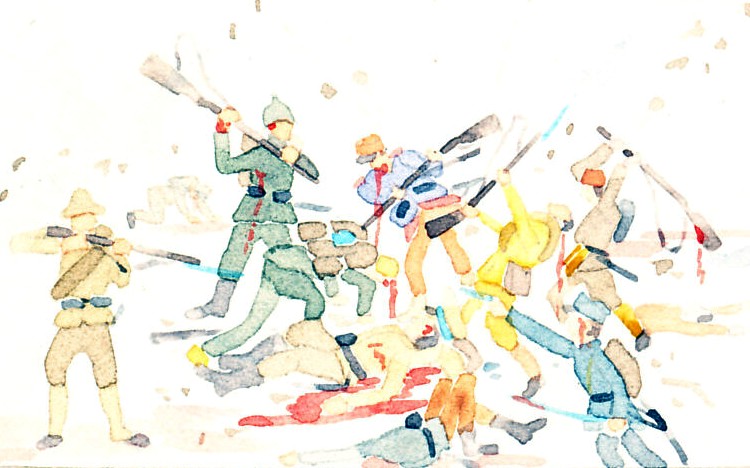Postcard report and map of an Austrian victory at Krasnik on August 26, 1914. The three-day Battle of Krasnik, an Austro-Hungarian victory, began on August 23, 1914 when General Dankl leading the Austro-Hungarian First Army, advancing, struck the Russian Fourth Army, and drove them back towards Lublin. Russia is shown in green, Austria-Hungary yellow, and Germany blue.

Österreichische Siege, 26. 8. 1914
Das österreichische Kriegspressequartier meldet: Westlich der Weichsel errichten unsere Kräfte im Anschluß an die deutschen Verbündeten unter kleinen Kämpfen gestern den Abschnitt des Komionka Flussen zwischen Kielce und Radom. Oestlich der Weichsel warfen unsere Siegreich vordringenden Kräfte am 23 August bei Krasnik auf dem Wege nach Lublin eine starke Gruppe zweier russischer Korps zurück. Ueber 1000 Russen, darunter viele Offiziere, fielen unverwundet in unsere Hände. Eine Anzahl Fahnen, Maschinengewehre und Geschütze wurden erbeutet. (19)
Austrian victories, 26 8th 1914
The Austrian war press bureau reports: West of the Vistula our forces were increased by the addition of our German allies in fighting yesterday at the section of the Komionka River between Kielce and Radom. East of the Vistula our victorious forces advanced on 23 August at Krasnik, and drove a strong group of two Russian corps back to Lublin. About 1,000 Russians, including many officers, fell uninjured into our hands. A number of flags, rifles and machine guns were captured. (19)
Reverse:
Message dated February 7, 1915. Field postmark 9 Res. Div.
B.Z. Kriegskarte
Verlag der B.Z. am Mittag, Berlin
B.Z. War card
Publishing the B.Z. at noon, Berlin
SEE HERWIG, PP. 92, 93
Other views:
Larger, Larger, Back
